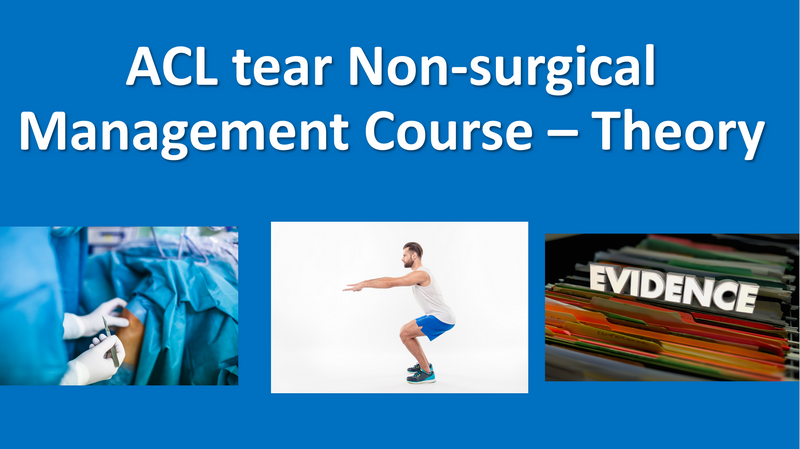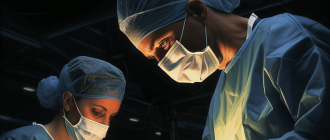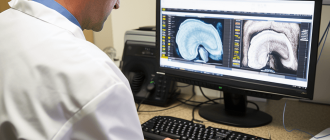Non-Surgical Management of MALS: Exploring Conservative Treatment Options.

The treatment of Median Arcuate Ligament Syndrome (MALS) can be challenging, as it often requires a multidisciplinary approach. While surgical interventions have traditionally been the mainstay of management, there is growing interest in exploring conservative, non-surgical options for patients with MALS.
When it comes to the management of MALS, conservative treatment options play a crucial role in improving patient outcomes. These non-surgical approaches focus on addressing the underlying causes of MALS and alleviating symptoms, without the need for invasive procedures.
One of the key non-surgical options for managing MALS is lifestyle modifications. This may involve changes in diet, exercise, and stress management techniques to reduce the symptoms associated with MALS. Additionally, physical therapy and chiropractic care can also be beneficial in improving vascular flow and reducing pain.
In addition to lifestyle modifications, there are also non-surgical interventions available for managing MALS. These may include medications such as pain relievers and muscle relaxants to alleviate symptoms. Furthermore, alternative therapies like acupuncture and herbal supplements have shown promise in providing relief for MALS patients.
Overall, exploring non-surgical options for the management of MALS is essential in providing comprehensive care for patients. While surgical intervention may still be necessary in some cases, considering conservative approaches can improve patient outcomes and reduce the need for invasive procedures. By taking a holistic approach to MALS management, healthcare providers can offer patients a range of options tailored to their specific needs.
What is MALS?
MALS stands for Median Arcuate Ligament Syndrome. It is a rare condition that affects the median arcuate ligament, which is a connective tissue band that attaches the diaphragm to the spine. When this ligament compresses the celiac artery, it can cause a range of symptoms, including chronic abdominal pain, weight loss, nausea, and vomiting.
MALS is often misdiagnosed or overlooked because its symptoms can mimic other digestive disorders such as irritable bowel syndrome or gallbladder disease. Because of this, it is important to seek prompt medical attention to properly diagnose and treat MALS.
Traditionally, the treatment for MALS has involved surgical intervention to release the compression on the celiac artery. However, there are also non-surgical or conservative options available for the management of MALS. These options focus on relieving symptoms and improving quality of life without the need for invasive procedures.
Exploring non-surgical options for the management of MALS can include lifestyle changes such as dietary modifications, physical therapy, and pain management techniques. These options can help alleviate symptoms and improve overall well-being for individuals living with MALS.
Non-surgical options for the management of MALS:
| Option | Description |
| Dietary modifications | Adjusting the diet to avoid triggering symptoms, such as consuming smaller, more frequent meals and avoiding trigger foods. |
| Physical therapy | Working with a physical therapist to strengthen the abdominal muscles, improve posture, and alleviate muscle tension. |
| Pain management techniques | Exploring pain management options, such as medications, acupuncture, or relaxation techniques, to help manage chronic abdominal pain. |
It is important to note that non-surgical options may not completely eliminate symptoms in all cases of MALS. The effectiveness of these options can vary depending on the individual and the severity of their condition. Therefore, it is crucial to work closely with a healthcare professional to develop a personalized management plan for MALS.
Understanding the condition
Malnutrion Associated Liver Steatosis (MALS) is a condition that affects the liver and is characterized by the accumulation of fat in the liver cells. It is a non-surgical disease that can be managed through various treatment options.
MALS is a complex condition that can cause a wide range of symptoms, including fatigue, abdominal pain, jaundice, and weight loss. The exact cause of MALS is not fully understood, but it is believed to be related to a combination of genetic and environmental factors.
Diagnosis of MALS typically involves a combination of physical examination, medical history review, and imaging tests such as ultrasound or MRI. Once diagnosed, the management of MALS can involve a multi-disciplinary approach, including diet and lifestyle changes, medication, and regular monitoring.
Dietary modifications are often a key component of managing MALS. This may include reducing intake of fatty and processed foods, increasing consumption of fruits and vegetables, and maintaining a healthy weight. In some cases, dietary supplements may be recommended to help support liver health.
In addition to dietary changes, medications may be prescribed to help manage symptoms and improve liver function. These can include medications to reduce inflammation, control cholesterol levels, or manage complications such as diabetes or high blood pressure.
Regular monitoring and follow-up with healthcare professionals are important in the management of MALS. This may involve regular blood tests to assess liver function, imaging tests to monitor changes in the liver, and ongoing communication with a healthcare team to address any concerns or changes in symptoms.
Overall, MALS is a complex condition that requires a comprehensive approach to management. Exploring non-surgical treatment options, such as dietary modifications and medication, can help individuals with MALS manage symptoms, improve liver health, and maintain overall well-being.
Symptoms and diagnosis
MALS (Median Arcuate Ligament Syndrome) is a rare disorder characterized by the compression of the celiac artery by the median arcuate ligament, causing a range of symptoms related to inadequate blood flow to the abdominal organs. The condition can be debilitating and significantly impact a person’s quality of life.
Diagnosing MALS can be challenging because its symptoms often overlap with those of other gastrointestinal disorders. The most common symptoms include:
- Chronic abdominal pain: The most prevalent symptom of MALS is chronic abdominal pain, which is often described as severe, constant, and postprandial (occurring after eating).
- Weight loss: Due to the pain and discomfort associated with eating, individuals with MALS may experience unintentional weight loss.
- Nausea and vomiting: Some people with MALS may experience nausea and vomiting, especially after meals.
- Abdominal bruit: In some cases, a healthcare provider may detect an abdominal bruit, which is an abnormal sound caused by turbulent blood flow.
- Gastrointestinal symptoms: MALS can cause a variety of gastrointestinal symptoms, including bloating, diarrhea, constipation, and early satiety.
If MALS is suspected, a thorough diagnostic evaluation is necessary to confirm the diagnosis. The diagnostic process typically includes:
- Medical history: A healthcare provider will take a detailed medical history, including a discussion of the patient’s symptoms, medical conditions, and any relevant family history.
- Physical examination: A physical examination may reveal tenderness in the upper abdomen and a pulsatile mass.
- Blood tests: Basic blood tests, such as a complete blood count (CBC) and liver function tests, may be conducted to rule out other potential causes of the symptoms.
- Imaging studies: Imaging studies, such as ultrasound, computed tomography angiography (CTA), or magnetic resonance angiography (MRA), may be performed to visualize the celiac artery and assess blood flow.
- Duplex ultrasound: Duplex ultrasound is a non-invasive test that uses sound waves to evaluate the blood flow in the arteries and can help identify any arterial stenosis or occlusion.
Once a diagnosis of MALS is confirmed, a comprehensive management plan can be developed. Treatment options for MALS can vary depending on the severity of symptoms, and range from conservative measures, such as dietary modifications and pain management, to more aggressive interventions, such as surgical procedures or endovascular interventions.
Traditional treatment options for MALS
When it comes to the management of Median Arcuate Ligament Syndrome (MALS), there are various treatment options available. While surgical intervention is often considered the gold standard, there are also non-surgical and conservative approaches that can be explored.
Non-surgical options:
- Medical management: Medications such as proton pump inhibitors (PPIs) can be used to help manage symptoms associated with MALS, such as abdominal pain and acid reflux.
- Dietary modifications: Some individuals with MALS find relief by making changes to their diet, such as avoiding trigger foods and eating smaller, more frequent meals.
- Lifestyle changes: Certain lifestyle modifications, such as stress management techniques and regular exercise, may help alleviate symptoms and improve overall well-being.
Conservative management:
- Pain management: For individuals experiencing significant pain, pain management techniques such as nerve blocks or physical therapy may be considered.
- Monitoring and observation: In cases where the symptoms of MALS are mild or relatively stable, regular monitoring and observation may be recommended to assess disease progression and guide further treatment decisions.
It is important to note that while these non-surgical and conservative options may provide relief for some individuals, they may not be effective for everyone. It is essential to work closely with a healthcare professional to determine the most appropriate treatment approach based on individual circumstances.
Surgical interventions
For patients with MALS who do not respond to conservative or non-surgical treatment options, surgical intervention may be necessary to manage their condition. There are several surgical procedures that can be considered for the management of MALS, including:
- Laparoscopic decompression: This minimally invasive procedure involves removing the constricting fibers around the celiac artery to relieve the compression. It is considered the gold standard treatment for MALS and has been shown to provide significant relief of symptoms in many patients.
- Open decompression: In some cases, a more extensive surgical procedure may be required. This involves making a larger incision in the abdomen to access and decompress the celiac artery. While this procedure is more invasive, it may be necessary for patients with severe compression or complex anatomical issues.
- Bypass surgery: In rare cases where the celiac artery is severely compressed or damaged, bypass surgery may be necessary. This involves creating a new pathway for blood to flow around the compressed area, bypassing the celiac artery entirely.
The choice of surgical intervention will depend on the individual patient’s specific circumstances, including the severity of their MALS and any other underlying medical conditions. It is important for patients to consult with a qualified healthcare professional to determine which surgical option is most appropriate for their situation.
Risks and outcomes of surgery
In the management of Median Arcuate Ligament Syndrome (MALS), surgery is often considered as a last resort when non-surgical options have failed to provide relief. However, like any surgical procedure, there are risks and potential outcomes associated with MALS surgery.
Risks:
- Infection: There is a risk of infection at the surgical site, which can lead to complications and delay the healing process.
- Bleeding: Surgery involves making incisions, which can lead to bleeding. Excessive bleeding may require blood transfusions or additional surgical interventions.
- Damage to nearby structures: During surgery, there is a risk of unintentionally damaging nearby structures such as blood vessels, nerves, or organs.
- Adverse reaction to anesthesia: Some individuals may experience adverse reactions to anesthesia, which can include nausea, vomiting, or allergic reactions.
- Scar tissue formation: Surgery can lead to the formation of scar tissue, which may cause discomfort or restrict movement.
Outcomes:
- Pain relief: One of the primary goals of MALS surgery is to alleviate pain and improve quality of life. Successful surgery can result in significant pain relief and improved overall well-being.
- Improved blood flow: Surgery aims to relieve the compression on the celiac artery, allowing for improved blood flow to the organs supplied by this artery. This can lead to improved digestive function and relief of associated symptoms.
- Reduced dependency on medications: Successful surgery may result in a reduced need for pain medications, allowing individuals to resume normal activities without relying on medication for pain management.
- Improved quality of life: By addressing the underlying cause of MALS, surgery can greatly improve an individual’s quality of life, allowing them to engage in activities they were previously unable to participate in due to pain or limited mobility.
It is important to note that the risks and outcomes of MALS surgery can vary from person to person. Each individual’s case is unique, and the decision to undergo surgery should be carefully evaluated in consultation with a healthcare professional who specializes in the management of MALS.
Non-surgical approaches for MALS management
When it comes to treating Median Arcuate Ligament Syndrome (MALS), not all patients may be suitable candidates for surgery or may prefer non-surgical options. In such cases, conservative approaches can be explored to manage the symptoms and improve the quality of life for individuals dealing with MALS.
1. Medical management:
- Nonsteroidal anti-inflammatory drugs (NSAIDs) can be prescribed to help manage pain and reduce inflammation in the affected area.
- Medications such as muscle relaxants may be used to alleviate muscle spasms and provide relief.
- Antidepressant medications, such as tricyclic antidepressants, can be prescribed to manage chronic pain associated with MALS.
- In some cases, medications that suppress acid production in the stomach may be prescribed to reduce symptoms of gastroesophageal reflux disease (GERD) which is often seen in patients with MALS.
2. Nutritional management:
A nutritious diet can play a significant role in managing the symptoms of MALS. Avoiding trigger foods such as fatty or fried foods, carbonated beverages, and caffeine can help reduce painful symptoms associated with MALS. Eating smaller, more frequent meals can also help prevent symptoms such as abdominal pain and nausea.
3. Physical therapy:
Working with a physical therapist who specializes in MALS can be beneficial in managing symptoms and improving physical function. Physical therapy exercises can help strengthen the core muscles, improve posture, and reduce muscle tension in the abdominal region.
4. Stress management:
Stress can exacerbate symptoms of MALS. Stress management techniques such as deep breathing exercises, meditation, or engaging in relaxing activities can help reduce stress levels and alleviate symptoms.
5. Alternative therapies:
Some individuals with MALS may find relief from alternative therapies such as acupuncture, chiropractic care, or massage therapy. These therapies can help improve circulation, reduce muscle tension, and provide pain relief.
6. Support groups:
Joining a support group or seeking counseling can be beneficial for individuals dealing with the challenges of MALS. Connecting with others who are going through similar experiences can provide emotional support, information sharing, and coping strategies.
It is important to note that non-surgical approaches may not provide a cure for MALS but can help manage symptoms and improve overall well-being. Consulting with a healthcare professional specializing in MALS is essential to determine the most appropriate non-surgical treatment options for an individual’s specific condition.
Dietary modifications
As part of the management of median arcuate ligament syndrome (MALS), non-surgical treatment options are often explored to alleviate symptoms and improve quality of life. One such option is dietary modifications, which can play a role in reducing symptoms and managing the condition.
Dietary changes that may be beneficial for individuals with MALS include:
- Avoiding trigger foods: Certain foods can worsen symptoms in individuals with MALS. These may include fatty or greasy foods, spicy foods, caffeine, and carbonated beverages. By identifying and avoiding trigger foods, patients may experience a reduction in symptoms such as pain, bloating, and nausea.
- Small, frequent meals: Consuming smaller meals more frequently throughout the day can help prevent excessive stretching of the stomach and reduce the pressure on the median arcuate ligament. This can lead to less discomfort and improved digestion.
- High-fiber diet: Including a variety of high-fiber foods in the diet, such as fruits, vegetables, whole grains, and legumes, can promote regular bowel movements and prevent constipation. This can be especially helpful for individuals with MALS who may experience gastrointestinal symptoms linked to the compression of the celiac artery.
- Hydration: Staying hydrated is important for overall health and can help manage symptoms related to MALS. Drinking plenty of water throughout the day can promote healthy digestion and reduce the risk of constipation.
It is important for individuals with MALS to work closely with a healthcare professional or registered dietitian to develop a tailored dietary plan that is suited to their specific needs and symptoms. This can help ensure that the dietary modifications are effective and do not result in any nutritional deficiencies.
While dietary modifications alone may not completely eliminate symptoms associated with MALS, they can be a valuable addition to a comprehensive treatment plan that includes other conservative measures and possibly surgical interventions. By exploring different non-surgical options, individuals with MALS can find a management approach that works best for them.
Physical therapy
Physical therapy is one of the conservative treatment options that can be explored for the management of MALS. It focuses on improving the function and mobility of the muscles and surrounding tissues in the abdominal region.

Physical therapy techniques for MALS may include:
- Stretching exercises: These exercises help to stretch and elongate the abdominal muscles, improving their flexibility and reducing any constrictions caused by MALS.
- Strengthening exercises: Strengthening the core muscles can provide additional support to the abdomen and help alleviate symptoms associated with MALS.
- Postural training: Correcting and improving posture can relieve pressure on the abdominal region and reduce symptoms of MALS.
- Manual therapy techniques: Hands-on techniques such as myofascial release, massage, and joint mobilization may be used to target specific areas of tightness or dysfunction in the muscles and soft tissues.
- Education and advice: Physical therapists may provide education and advice on lifestyle modifications, ergonomic techniques, and movement patterns to minimize symptoms and improve quality of life.
While physical therapy cannot cure MALS, it can be an important part of a comprehensive treatment approach. It can help improve functional abilities, reduce pain and discomfort, and enhance overall well-being for individuals with MALS.
It is important for individuals with MALS to consult with a physical therapist experienced in treating this condition to develop an individualized treatment plan tailored to their specific needs and goals.
| Pros | Cons |
|
|
Medication options
When exploring non-surgical options for the treatment of Median Arcuate Ligament Syndrome (MALS), medication can be a conservative approach to managing symptoms and improving the patient’s quality of life. While medication cannot cure MALS, it can help alleviate pain and provide relief.
- Pain medications: Over-the-counter pain relievers such as acetaminophen or nonsteroidal anti-inflammatory drugs (NSAIDs) may be recommended to manage mild to moderate pain associated with MALS.
- Antidepressants: Certain antidepressant medications, such as tricyclic antidepressants (TCAs) or selective serotonin reuptake inhibitors (SSRIs), may be prescribed to help manage chronic pain. These medications work by altering the brain’s perception of pain and can help improve sleep and mood as well.
- Nerve medications: Medications that are commonly used to treat nerve-related pain, such as gabapentin or pregabalin, may be prescribed to help alleviate the discomfort caused by MALS. These medications work by targeting the nerves’ pain signals, reducing their intensity.
It’s important to note that medication options for MALS are typically used as part of a comprehensive treatment plan and may not be the sole treatment method. The most effective course of action will depend on each individual case and should be determined in consultation with a healthcare provider.
Alternative Medicine
Alternative medicine refers to non-surgical treatment options for the management of MALS. While surgery is often considered the primary treatment for this condition, exploring conservative approaches can be beneficial for some patients.
There are several alternative medicine techniques that can help alleviate symptoms and improve quality of life for individuals with MALS. These may include:
- Acupuncture: This ancient Chinese practice involves the insertion of thin needles into specific points on the body to stimulate energy flow. Acupuncture has been shown to reduce pain and promote relaxation, which can be beneficial in managing MALS symptoms.
- Herbal medicine: The use of herbal remedies can help alleviate symptoms associated with MALS. Certain herbs, such as ginger and turmeric, have anti-inflammatory properties that can help reduce abdominal pain and discomfort.
- Meditation: Mindfulness meditation techniques, such as deep breathing and focusing on the present moment, can help individuals with MALS manage pain and stress. By reducing stress levels, meditation can improve overall well-being.
- Yoga: Practicing yoga can help improve flexibility and relieve muscle tension, which are common symptoms of MALS. Gentle stretching exercises, combined with breathing techniques, can provide relief and promote relaxation.
It is important to note that alternative medicine techniques may not be suitable for everyone, and their effectiveness can vary from person to person. It is always recommended to consult with a healthcare professional before starting any alternative treatment options.
Benefits of non-surgical options for MALS
Conservative treatment and management of Median Arcuate Ligament Syndrome (MALS) can offer several benefits to patients without the need for surgery. These non-surgical options provide relief from symptoms and can improve the overall quality of life for individuals living with MALS. Here are some key benefits:
- Non-invasive: Non-surgical options for MALS do not require any incisions or invasive procedures. This means that patients can avoid the risks and potential complications associated with surgeries.
- Minimally disruptive: Non-surgical treatments allow individuals to maintain their regular daily activities with minimal disruption. They can continue working, exercising, and participating in their favorite activities without significant interruptions.
- Cost-effective: Compared to surgical interventions, non-surgical options for MALS are often more cost-effective. They may involve less healthcare expenses and can be a financially viable solution for patients.
- Pain relief: Non-surgical treatments can provide relief from the chronic abdominal pain that is a common symptom of MALS. These options, such as medications and therapeutic interventions, focus on managing pain and improving overall comfort.
- Reduced recovery time: Since non-surgical options do not involve extensive recovery periods, patients can experience quicker relief from symptoms. This means shorter hospital stays, if any, and a faster return to normal activities.
- Individualized approach: Non-surgical treatments offer a more personalized approach to managing MALS. Each patient’s condition is unique, and their treatment plan can be tailored to their specific needs, ensuring the best possible outcome.
It is important to consult with a healthcare professional to determine the most appropriate non-surgical treatment options for MALS. They can evaluate the individual’s condition and recommend the most effective and suitable treatment plan.
Less invasive
For patients diagnosed with median arcuate ligament syndrome (MALS), there are non-surgical management options available. These less invasive treatments can help alleviate symptoms and improve quality of life without the need for surgery. Here are some conservative treatment options for MALS:
- Medical management: Medications such as antacids, antispasmodics, or pain relievers may be prescribed to help manage symptoms of MALS.
- Dietary modifications: Making changes to the diet can help reduce symptoms. Avoiding trigger foods, such as those high in fat or caffeine, can help alleviate symptoms like abdominal pain or bloating.
- Physical therapy: Physical therapy may be recommended to help improve posture, strengthen abdominal muscles, and alleviate pain associated with MALS.
- Weight management: Maintaining a healthy weight or losing weight if overweight can help reduce the pressure on the median arcuate ligament and improve symptoms.
In addition to these conservative treatment options, there are also some interventional procedures that can be considered as less invasive alternatives to surgery:
- Celiac plexus block: This procedure involves injecting a local anesthetic into the celiac plexus, a cluster of nerves near the diaphragm. It can help temporarily alleviate pain associated with MALS.
- Botulinum toxin injection: Botulinum toxin, commonly known as Botox, can be injected into the abdominal muscles to help reduce spasms and alleviate pain.
- Angioplasty and stenting: In some cases, a minimally invasive procedure called angioplasty may be performed to widen the narrowed arteries and restore blood flow. Stenting, which involves placing a small tube-like device called a stent, may also be done to keep the arteries open.
It is important to note that while these less invasive treatment options may provide symptomatic relief, they may not address the underlying cause of MALS. Consultation with a healthcare professional is crucial to determine the most appropriate management approach based on individual circumstances.
Reduced risk and recovery time
When it comes to the management of MALS, exploring non-surgical treatment options can offer several benefits. One of the main advantages is the reduced risk compared to surgical interventions. Non-surgical treatments do not require invasive procedures, reducing the chances of complications and adverse reactions to anesthesia. This can be particularly important for patients who may have underlying health conditions that make them high-risk candidates for surgery.
Another significant benefit of non-surgical management options is the reduced recovery time. Surgical interventions typically require a longer recovery period, during which patients may experience discomfort or limitations in their daily activities. Non-surgical treatments, on the other hand, often have shorter recovery times, allowing patients to resume their regular routine more quickly.
- Minimally invasive procedures: One approach to non-surgical management of MALS is the use of minimally invasive procedures. These techniques involve accessing the affected area through small incisions, reducing tissue trauma and promoting faster healing. Examples of minimally invasive procedures include laparoscopic decompression or nerve blocks.
- Physical therapy: Physical therapy can also be an integral part of non-surgical management. Therapeutic exercises can help improve abdominal muscle strength and flexibility, which can alleviate the symptoms of MALS. Physical therapists can also provide guidance on posture and body mechanics to reduce strain on the celiac artery.
- Dietary modifications: In some cases, dietary modifications may be recommended as a non-surgical treatment option for MALS. These changes can include avoiding trigger foods that may exacerbate symptoms and incorporating foods that promote healthy digestion and gut health.
It is important to note that the choice of non-surgical management options may vary depending on the severity of MALS and individual patient factors. Consulting with a healthcare professional specialized in the treatment of MALS is essential for determining the most appropriate approach for each patient.
In summary, exploring non-surgical treatment options for the management of MALS can offer reduced risk and recovery time compared to surgical interventions. Minimally invasive procedures, physical therapy, and dietary modifications are among the potential non-surgical options that can help alleviate MALS symptoms and improve quality of life for affected individuals.
Improved quality of life
For patients with MALS, conservative and non-surgical management options can greatly improve their quality of life. While surgery may be necessary in some cases, exploring non-surgical options first can often provide relief from symptoms without the need for invasive procedures.
Conservative management strategies for MALS typically involve lifestyle modifications and medication to alleviate symptoms. This may include dietary changes, such as consuming smaller, more frequent meals, and avoiding foods that may exacerbate symptoms, such as fatty or spicy foods. Additionally, patients may be advised to avoid extreme physical exertion or activities that put excessive strain on the abdominal area.
In addition to lifestyle modifications, patients may also be prescribed medication to help manage symptoms. This may include medications to reduce pain and inflammation, or medications that help relax the muscles of the digestive system to alleviate abdominal pain and bloating.
Exploring non-surgical options for the management of MALS can also involve the use of alternative therapies. These may include acupuncture, chiropractic care, or physical therapy to address underlying musculoskeletal issues that may contribute to symptoms.
Furthermore, support groups and counseling can be valuable resources for MALS patients, as they can provide emotional support and help individuals cope with the challenges of living with this condition.
Overall, by exploring non-surgical options for the management of MALS, patients have the opportunity to improve their quality of life and reduce the impact of symptoms on their daily activities. However, it is important for individuals with MALS to work closely with a healthcare professional to develop a comprehensive treatment plan tailored to their specific needs and symptoms.
Considerations for choosing non-surgical options
MALS, or median arcuate ligament syndrome, is a condition that can cause chronic abdominal pain and other gastrointestinal symptoms. While surgical intervention is often recommended for the management of MALS, there are also non-surgical options that can be considered. These non-surgical options can help to alleviate symptoms and improve quality of life for patients with MALS. Here are some important considerations for choosing non-surgical options:
1. Exploring conservative treatments: Before considering surgical options, it is important to explore conservative treatments for managing MALS. This can include lifestyle changes, such as dietary modifications, stress reduction techniques, and regular exercise. These conservative treatments can help to reduce symptoms and improve overall well-being.
2. Understanding the benefits and limitations: Non-surgical options for MALS may provide relief from symptoms and improve quality of life, but it is important to understand their limitations. These options may not provide a permanent solution and may need to be used in combination with other treatments.
3. Considering individual preferences: The choice of non-surgical options should take into consideration the preferences and goals of the individual with MALS. Some individuals may prefer non-invasive treatments that do not involve surgery, while others may be more willing to consider surgical options. It is important to have an open and honest discussion with healthcare providers to determine the best course of treatment for each individual.
4. Seeking expert opinion: When considering non-surgical options for the management of MALS, it is important to seek the opinion of healthcare providers who specialize in the treatment of this condition. They can provide valuable insight and recommendations based on their expertise and experience.
5. Exploring clinical trials and research: Clinical trials and research studies may be available for individuals with MALS who are interested in non-surgical options. These studies can provide access to innovative treatments and therapies that are not widely available yet. It is worth exploring these opportunities for those who are interested.
In conclusion, non-surgical options can be a viable choice for the management of MALS. By exploring conservative treatments, understanding the benefits and limitations, considering individual preferences, seeking expert opinion, and exploring clinical trials and research, individuals with MALS can make an informed decision about their treatment options.
Individual patient factors
In the exploration and treatment of MALS, it is important to consider individual patient factors that may influence the choice of non-surgical options for management. These factors include:
- Symptom severity: The severity of a patient’s symptoms can play a role in determining the most appropriate non-surgical treatment approach. Patients with mild symptoms may benefit from conservative management strategies, while those with more severe symptoms may require more aggressive interventions.
- Underlying medical conditions: The presence of underlying medical conditions can impact the choice of non-surgical treatment options. Patients with comorbidities that may prolong recovery or impair healing may need to explore alternative management strategies.
- Overall health and fitness level: A patient’s overall health and fitness level can influence the feasibility and success of non-surgical management options for MALS. Individuals with good general health and fitness may be better able to tolerate conservative therapies and engage in lifestyle modifications.
- Patient preferences: Patient preferences, values, and goals should be taken into consideration when selecting non-surgical management strategies for MALS. Some individuals may prefer conservative approaches initially, while others may be more open to exploring more aggressive interventions.
It is important for healthcare providers to have open and honest discussions with patients to fully understand their individual factors and preferences. This collaborative approach can help guide the selection of the most appropriate non-surgical management strategy for each patient with MALS.
Collaboration with healthcare professionals
When it comes to the treatment of median arcuate ligament syndrome (MALS), a non-surgical approach is often considered as the first line of treatment. This approach involves a conservative management strategy that focuses on exploring non-surgical options to alleviate symptoms and improve quality of life for patients suffering from MALS.
In order to provide the best possible care for patients with MALS, it is important for healthcare professionals to work together and collaborate on treatment plans. This collaboration should involve a multidisciplinary team that includes specialists such as gastroenterologists, interventional radiologists, vascular surgeons, pain management specialists, and other healthcare professionals.
Gastroenterologists: Gastroenterologists play a crucial role in the management of MALS, as they are often the first point of contact for patients experiencing symptoms. They can help diagnose MALS through a thorough evaluation of symptoms, physical examination, and diagnostic tests. Gastroenterologists can also provide guidance on dietary modifications and medications to manage symptoms.
Interventional radiologists: Interventional radiologists use minimally invasive techniques to treat MALS. They may perform procedures such as celiac plexus block or celiac artery angioplasty and stenting to alleviate symptoms and improve blood flow to the intestines. Collaborating with interventional radiologists can help determine the best course of action for each individual patient.
Vascular surgeons: Vascular surgeons specialize in the management of blood vessel disorders. They can provide surgical options for MALS, such as median arcuate ligament release, if conservative methods are not successful. Collaborating with vascular surgeons can help determine the most appropriate surgical approach and ensure the best outcomes for patients.
Pain management specialists: Pain management specialists can help manage the chronic pain associated with MALS. They can provide guidance on pain medications, nerve blocks, and other techniques to alleviate symptoms and improve quality of life for patients.
Other healthcare professionals: Collaboration with other healthcare professionals such as dietitians, physical therapists, and psychologists can also be beneficial in the management of MALS. Dietitians can provide guidance on dietary modifications, physical therapists can help with rehabilitation exercises, and psychologists can provide support and assistance in coping with the emotional and psychological effects of living with MALS.
In conclusion, collaboration with healthcare professionals is essential in the management of MALS. By working together and exploring non-surgical options, healthcare professionals can provide comprehensive care to patients, alleviate symptoms, and improve overall quality of life.
Question-answer:
What is MALS?
MALS stands for Median Arcuate Ligament Syndrome. It is a condition characterized by compression of the celiac artery by the median arcuate ligament. This compression can lead to a variety of symptoms, including abdominal pain, weight loss, and nausea.
What are the non-surgical treatment options for MALS?
Non-surgical treatment options for MALS include dietary changes, medication management, and lifestyle modifications. Dietary changes may involve avoiding trigger foods and following a low-fat diet. Medication management may involve the use of pain relievers or medications that help relax the blood vessels. Lifestyle modifications may include stress reduction techniques and regular exercise.
Can MALS be managed without surgery?
Yes, MALS can be managed without surgery in many cases. Non-surgical treatment options can help alleviate symptoms and improve quality of life for individuals with MALS. However, in severe cases or when non-surgical options are not effective, surgery may be necessary.
What are the benefits of non-surgical options for MALS?
Non-surgical options for MALS offer several benefits. They are less invasive than surgery and typically have fewer risks and complications. Non-surgical options can also provide relief from symptoms, improve overall well-being, and allow individuals to maintain their daily activities without the need for extensive recovery time.
How effective are non-surgical options for managing MALS?
The effectiveness of non-surgical options for managing MALS can vary depending on the individual and the severity of their condition. In some cases, non-surgical options can provide significant relief from symptoms and allow individuals to live a normal life. However, in more severe cases, surgery may be required to fully alleviate symptoms and restore normal blood flow.
What is MALS?
MALS stands for Median Arcuate Ligament Syndrome. It is a condition where the median arcuate ligament, which is a band of tissue in the abdomen, compresses the celiac artery, causing symptoms such as abdominal pain and weight loss.
What are the non-surgical options for managing MALS?
There are several non-surgical options for managing MALS. These include dietary modifications, medication, and interventional radiology procedures. Dietary modifications may involve a low-fat diet to reduce symptoms. Medication options may include pain relievers and muscle relaxants to alleviate abdominal pain. Interventional radiology procedures, such as angioplasty or stenting, may be used to relieve the compression on the celiac artery.






